|

Shin Megami Tensei / Megami Ibunroku: Devil Survivor - Nintendo DS (2009)

American Cover
|
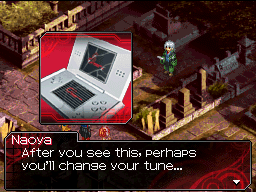
Devil Survivor
|

Devil Survivor
|
Devil Survivor, for being SMT's first outing on the DS, is a pretty big experiment. Few of the series veterans worked on the game. As a rare first, the artwork wasn't done by Kazuma Kaneko or (Persona 3 & 4)'s Shigenori Soejima. Additionally, the music wasn't composed by Shoji Meguro. Still, for a game that's another side story project branching off from the main series, Devil Survivor is pretty damn good.
Although the Japanese version uses the "Megami Ibunroku" tagline (the same as the original Persona), Devil Survivor is a strategy-RPG, more in the lines of Majin Tensei. Graphically, it's a lot like Final Fantasy Tactics, as you move your units across a grid-based battlefield. Each unit consists of three characters - when you get into combat, you enter the traditional Megami Tensei first person battle scene for a round or so of combat. Various factors, including exploiting weaknesses and plain old luck, can grant a character an extra turn. When the leader of the unit is taken down, the whole troupe is destroyed.
Each of the cast in Devil Survivor are amateur devil summoners. They all use COMPs much like in earlier games, only they have the appearance of DS consoles. The story focuses on these group of teenagers, who are blissfully unaware of the existence of the supernatural. Then,
demons start appearing, wreaking havoc, and the government locks the city of Tokyo down.
The main cast learns they have seven days to either stop the lockdown or find a way out, or else the entire city and all its population will be annihilated to get rid of the demonic invaders.
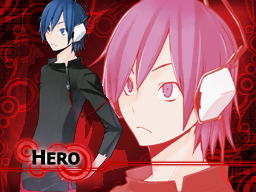
|
The Protagonist
The nameless hero, named by the player. A 17-year old Japanese student. The introduction informs the player that he will be the one with the will to determine how the situation resolves itself.
|
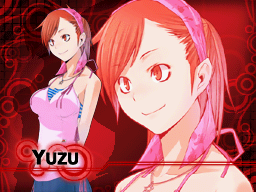
|
Yuzu Tanikawa
Dubbed "Yoohoo" by her friends, Yuzu is of the Protagonist's friends. She wants the lockdown to end and wants to escape more than anything else. Her emails to the protagonist are full of internet slang and smiley faces.
|
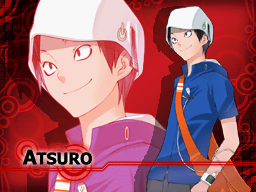
|
Atsuro Kihara
The Protagonist's other close friend. Atsuro is extremely computer-savvy and figures out many of the COMP's functions before anyone else. He will side with the Protagonist regardless of what route he takes.
|

|
Naoya
The Protagonist's cousin, who was largely responsible for the demonic invasion, by creating the devil summoning program for an outside group. Siding with Naoya results in a route largely similar to the True Demon ending in Nocturne, as he wants to let demons reign over everything.
|
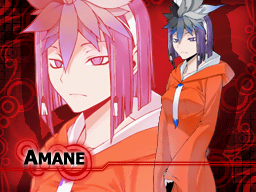
|
Amane Kuzuryu
The leader of a mysterious cult called the Shomonkai, all of whom possess COMPs and seek to lead humanity to a law-abiding future. They are extremely similar to the Messian faction in SMT 1 & 2. She will only join the Protagonist under specific conditions.
|

|
Keisuke Takagi
A quiet student who takes to devil summoning very quickly after the lockdown, and soon decides to punish the wicked with the demons at his command, even if it means killing them. Keisuke is Devil Survivor's equivalent of a Law Hero, and will join if the Protagonist sees things his way.
|

|
Tadashi "Kaido" Nikaido
A foul-mouthed leader of a local gang. Kaido decides to use his demons to hunt down the killer of his brother, who perished in the murders preceding the lockdown. Kaido is Devil Survivor's equivalent of a Chaos Hero, and will join if the Protagonist sees things his way.
|
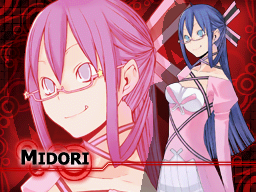
|
Midori Komaki
A carefree cosplayer who gets trapped in the lockdown while in costume. She decides to become a hero of justice after getting her own COMP, acting very similar to a power ranger type. She will join if successfully rescued by the Protagonist.
|
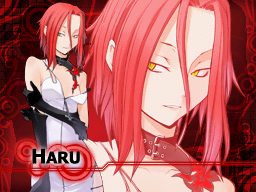
|
Yoshino "Haru" Harusawa
A singer whose voice has the power to compel demons. Her voice makes her the target of several factions within the lockdown.
|
In true Shin Megami Tensei tradition, most of the cast have their own opinion on how to resolve the lockdown. Taking their side at key points can lead to Devil Survivor's myriad of potential endings. Among them, he can attempt to destroy the invading military, side with the angelic forces of the Shomonkai, the demonic forces working with Naoya, or simply escape and leave it all behind.
Not all choices simply affect the ending. Early in Devil Survivor, the Protagonist's trio realize they can see a timer above everyone that they meet; a ticking clock which informs the player of when that person will perish. For almost everyone, it says 7 days at most, when the lockdown will end. For certain people, it may be shorter, indicating a tragedy's about to befall them. The Protagonist has the option of intervening to save them, or focusing on the main story. Each of the seven days only has a set amount of hours. Time spent talking to people or engaging in story battles will take up half an hour. (The player can engage in "free" battles to gain levels and new demons, which don't take up any time.)
Per usual protocol, devil summoning requires the player to gain the support of other demons. In Devil Survivor, this is done by purchasing them at an eBay-style online auction. The player has to bid a set amount of money to gain a demon. By winning, he can gain new demons into his group. There's also a fusion system to create new ones, but Devil Survivor adds a much needed enhancement to the classic SMT element: inherited skills can be decided by the player, and not subject to a random assortment. However, a demon can only use a maximum of three spells and four enhancement effects, so this isn't quite as effective as it sounds. Still, it makes it much easier to make a killer party, especially since all story characters can have their skills selected the same way. All fusion is done through the Protagonist's COMP, which uses a program variant on the Cathedral of Shadows, so there's no familiar priest helper this time around.
Perhaps reflecting the DS's younger demographic, the character designs are a bit more cartoony than usual. Taken with the light-hearted dialogue in the beginning, it could be easy to mistake Devil Survivor as dumbed down, but once the story gets under way, it's clear that this is classic Megaten. Although all the character art is brand new, longterm SMT fans should recognize the demon designs. They are all taken from older games, and utilize the original artwork of Kazuma Kaneko. For example, Devil Survivor's Angel isn't the BDSM version seen in SMT II and later games, but the original version which appears in a robe. The static battle graphics look very reminiscent of the old Super Famicom games, albeit with a bit more detail. The music is loud butt rock mixed with some electronica, and there's even a catchy J-Pop opening song. It's a pretty good soundtrack, let down by the sparse variety of songs, which you'll hear over and over and over.
It's not without some minor issues - for example, the ally AI for characters you need to protect is astoundingly stupid, and any missions where you need to escort or protect anyone is a huge pain. Regardless, Devil Survivor is a fantastic game, easy one of the best strategy RPGs on the platform, and quality enough to stand aside genre classics like Tactics Ogre. It's also a sizable step up from any of the previous Majin Tensei games. For what's essentially a side-story project, it has a lot of depth crammed into it, and will give an SMT fan lots to occupy their time.
|

Devil Survivor

Devil Survivor
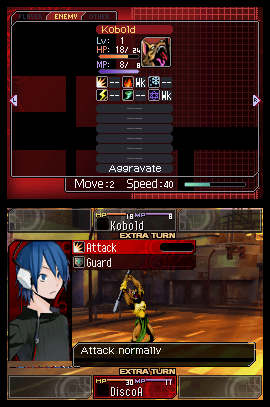
Devil Survivor

Devil Survivor
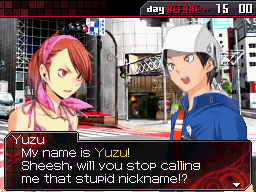
Devil Survivor

Devil Survivor
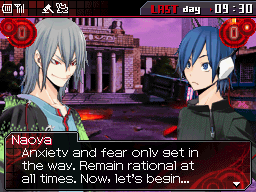
Devil Survivor
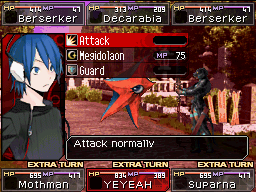
Devil Survivor
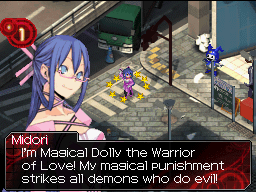
Devil Survivor
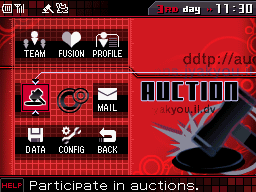
Devil Survivor

Devil Survivor
|
Shin Megami Tensei: Strange Journey - Nintendo DS (2009)

American Cover
|

Shin Megami Tensei: Strange Journey
|
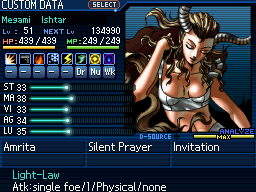
Shin Megami Tensei: Strange Journey
|
The basic gameplay takes a step back from Nocturne, and returns it to the first-person dungeon crawling roots of the original Megami Tensei and Shin Megami Tensei games. The story takes place in the near future, wherein humanity is slowly driving the planet to ruin. Wars are breaking out, pollution is at an all-time high, and Earth is just generally going to hell in a handbasket. Then a giant abyss appears over the Antarctic, which a newly founded global coalition dubs the "Schwarzwelt". At first the group was simply fascinated by the abyss, then that fascination slowly turns to panic when the scientists examining the Schwarzwelt realize the abyss is growing. A gathering of military and scientific personnel are formed to investigate the Schwarzwelt, tasked with learning its secrets and somehow putting a stop to it before it swallows the planet whole. Upon arrival, the team not only discover alien worlds full of demons, but they also realize they don't have a way back to Earth, so the player is soon required to use the power of the demons against them.
Characters

|
The Protagonist
Dubbed a member of the United States Marine Corps in the US version, though he's Japanese in the original release. The development staff explicitly stated that the protagonist was meant to be the nationality that fit whatever region the game was released in.
|

|
Zelenin
One of the members of the Schwarzwelt Team's scientific task force, a Russian scientist. She distrusts the demons, and is reluctant to use them in battle. Zelenin is Strange Journey's equivalent of a Law Hero.
|
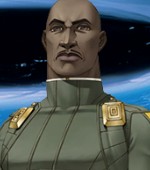
|
Commander Gore
The leader of the expedition, tasked with bringing the team home in one piece, and putting a stop to the Schwarzwelt.
|

|
Jimenez
A member of the strike crew, of Hispanic origin. Jimenez takes to summoning demons like a fish to water, and dislikes being told how to use them. Strange Journey's equivalent of a Chaos Hero.
|
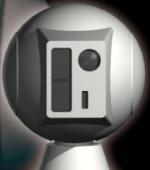
|
Arthur
A sentient computer on board the Red Sprite, the team's main ship. Arthur gives the player and the team their missions. Arthur is unfazed by the effects of the mission on the crew, so long as it gets accomplished.
|
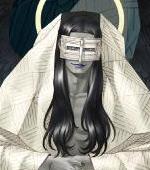
|
Mastema
An angel who appears in a deep level of the Schwarzwelt, claiming to have been sent by God to purge the demons and guide humanity down the right path. In Israeli literature, he is depicted as arch demon, and his name is derived from "mastemah", Hebrew for hatred, hostility, enmity, or persecution.
|
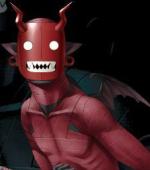
|
Bugaboo
This silly looking devil becomes Jimenez's first demon.
|
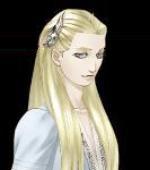
|
"Strange Girl"
A mysterious person who appears on board the Red Sprite, introducing herself as "Louisa Ferre". She appears interested in how the protagonist will carry out his assignment.
|
Each section of the Schwarzwelt appears as a separate dungeon, with multiple floors. While the early dungeons simply consist of twisting rooms and corridors, they gradually become more sadistic, throwing moving floors pitfalls, and dark rooms that can't be mapped out at the player. Strange Journey's mapping system looks similar to Etrian Odyssey's, as it appears on the bottom screen when walking around, except the player does none of the creation. SJ's floors are completely auto-mapped as you move along them, which should come as a relief to the player, since they'll have plenty else to occupy their time. The dungeons of the Schwarzwelt start out looking like arctic caverns, then gradually change shape to reflect humanity's negative points. Later dungeons appear in the form of red light districts, shopping malls, and dumpsters full of toxic waste. They're fully 3D, and look incredibly crisp and smooth, much, again, like Etrian Odyssey.
Strange Journey carries on the core series tradition of demonic conversation. Any veterans of Nocturne or even the early Persona games should feel right at home. Tell the demons what they (seem to) want to hear, and they may join you. Get them angry, and they'll either attack, leave, or ignore further attempts at conversation. Most of the demons questions fit a certain personality type, though they are especially curious about the player's explanation for the world's sorry state, and how humanity's going to fix it.
As another throwback, alignment figures heavily into Strange Journey's gameplay and story.
At first, the player will remain neutral (depicted in white font), but as the Schwarzwelt gets deeper, many questions poised by both demons and humans can change his alignment to Law (depicted in blue) or Chaos (depicted in red). Strange Journey has both multiple endings, and multiple endgame bosses depending on the player's alignment. The Fiends made infamous in the core games, and to a lesser extent, the fourth Devil Summoner game, also make a return, though they're not as integral to the plot; they're just very powerful hidden bosses.
The creepy masks worn by the cast aren't just for decoration. Along the way, the Demonica suits can be upgraded with applications that make mapping, summoning, and battle in general easier. For instance, certain apps let the player talk with demons on a full moon, detect hidden rooms, prevent fusion accidents, and recover set levels of MP while walking.
All of the equipment is forged from items called Forma, which are either detected automatically when exploring or are gifted by various demons. In another throwback to the original SNES games, the protagonist can't use magic, only swords, guns, and demons. Fortunately, the guns he can purchase frequently use stat and elemental magics, so he isn't forced to be a physical character like in earlier games.
Strange Journey completely eliminates the Press Turn system made famous in the Playstation 2 games. Instead, if a character of a certain alignment hits a weakness, the others in the party of a same alignment will follow up with a powerful physical attack. The more that share the first attacker's alignment, the more powerful the follow up will be. The player also has to fight enemies once to get any information on them. On the first encounter, they appear as formless data. Fighting them more often reveals more about the demon, which is displayed on the lower screen, and hitting their weaknesses speeds up the process.
Kazuma Kaneko, the series' mainstay character designer, contributed many new demonic designs for Strange Journey. While some appear from lesser known games in the US franchise, such as Soul Hackers, many of them are brand new demons from all sorts of mythologies. Many of the sprites are from Devil Survivor, except they're now all animated like the sprites in the Dragon Quest remakes, and they all look fantastic. There are also a few codec-powered CG cutscenes, though they're few and far between. The Game Over sequence, where the darkness spreads from the Schwarzwelt around the Earth, is chillingly understated.
The other name considered synonymous with Megaten as of late, composer Shoji Meguro, experiments with a different sound for Strange Journey. Rather than using the dark metal of Nocturne and Digital Devil Saga or the pop sounds of the newer Persona games, Strange Journey's soundtrack is full of booming symphonic pieces, including eerie demonic chants for battles and angelic choirs for the less chaotic moments.
Kaneko once admitted that this was meant to be Shin Megami Tensei IV - the only thing keeping it from an "official" numeral was that it takes place in the South Pole as compared to Tokyo, like the older games. The change to a more neutral location was done in hopes to appeal to a worldwide audience, fearing that the concentration on modern day Japan would be off-putting for foreigners. In spite of this, it's still clear that Strange Journey is the true successor to Nocturne that most Megatenists have been waiting for.
|
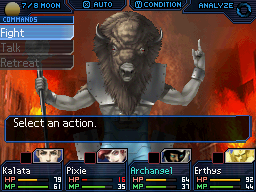
Shin Megami Tensei: Strange Journey
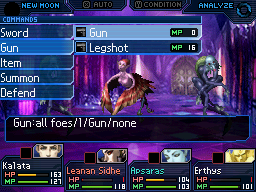
Shin Megami Tensei: Strange Journey
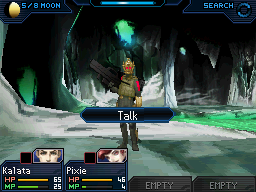
Shin Megami Tensei: Strange Journey
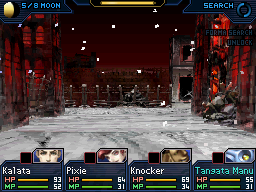
Shin Megami Tensei: Strange Journey
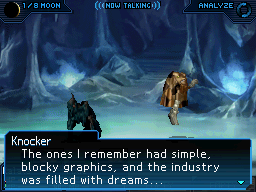
Shin Megami Tensei: Strange Journey
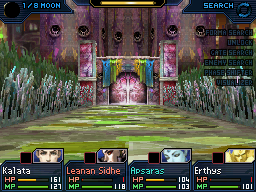
Shin Megami Tensei: Strange Journey
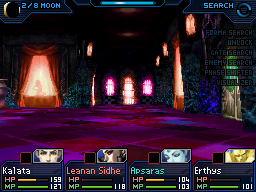
Shin Megami Tensei: Strange Journey

Shin Megami Tensei: Strange Journey
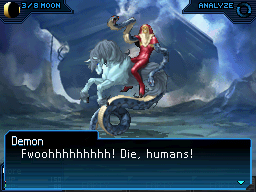
Shin Megami Tensei: Strange Journey
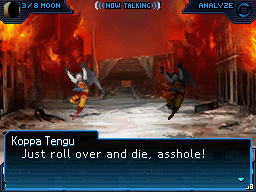
Shin Megami Tensei: Strange Journey
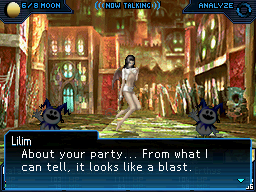
Shin Megami Tensei: Strange Journey

Shin Megami Tensei: Strange Journey
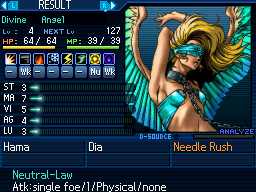
Shin Megami Tensei: Strange Journey
|
|















































